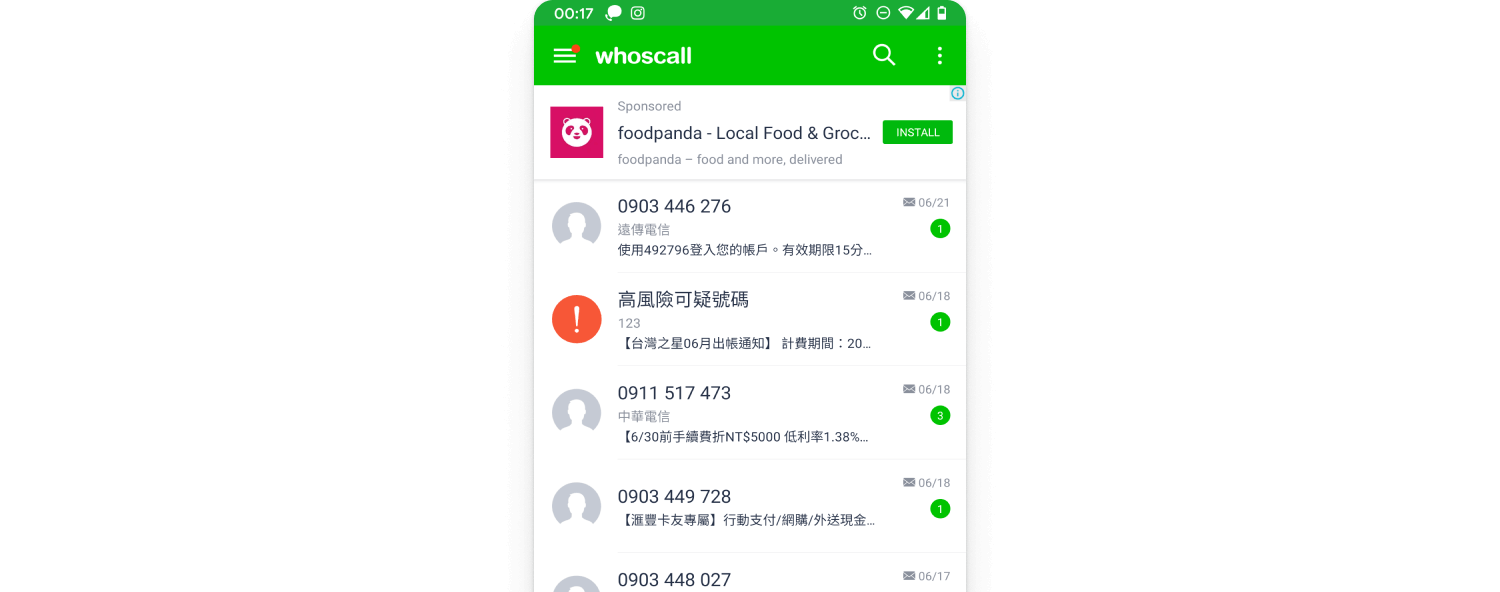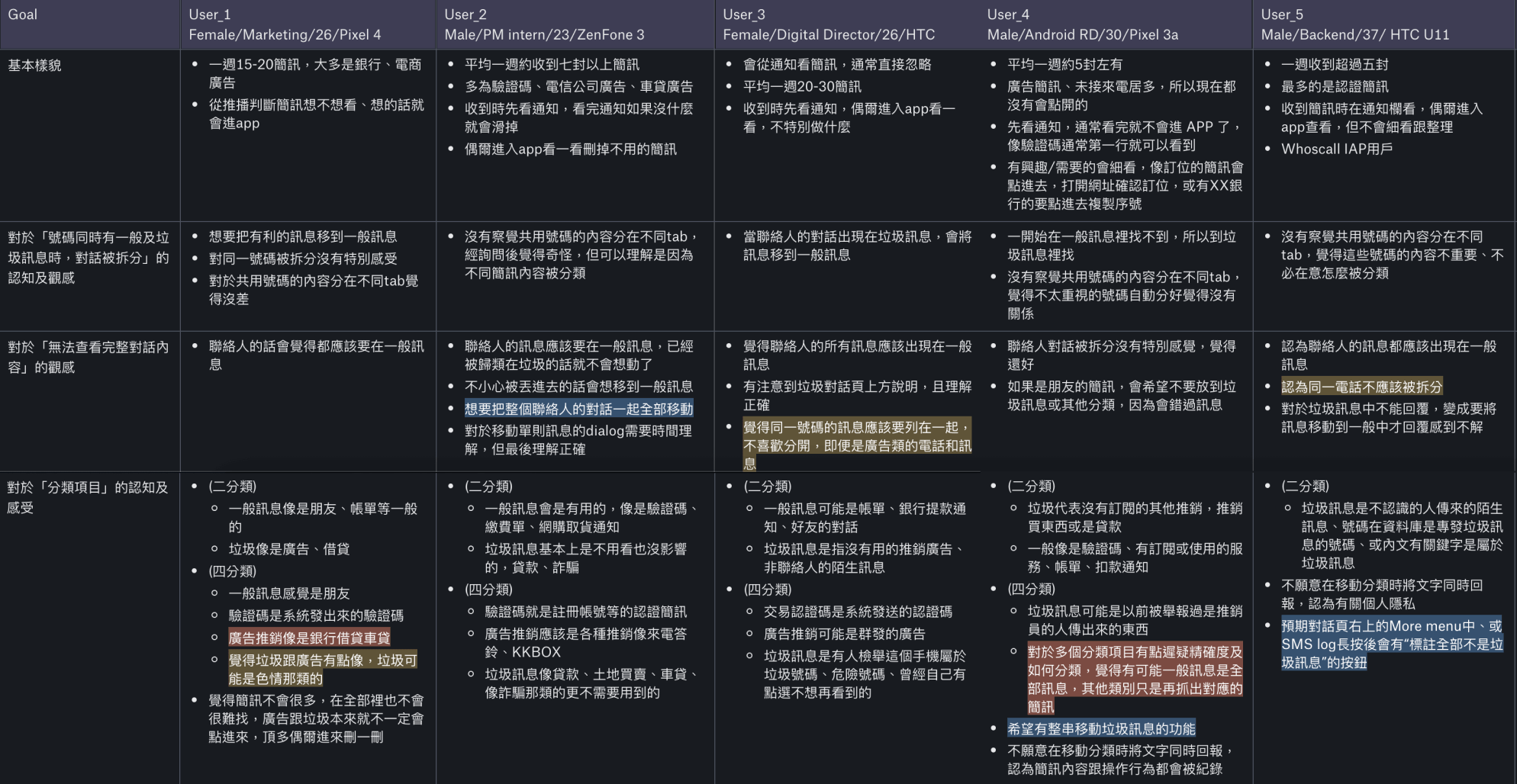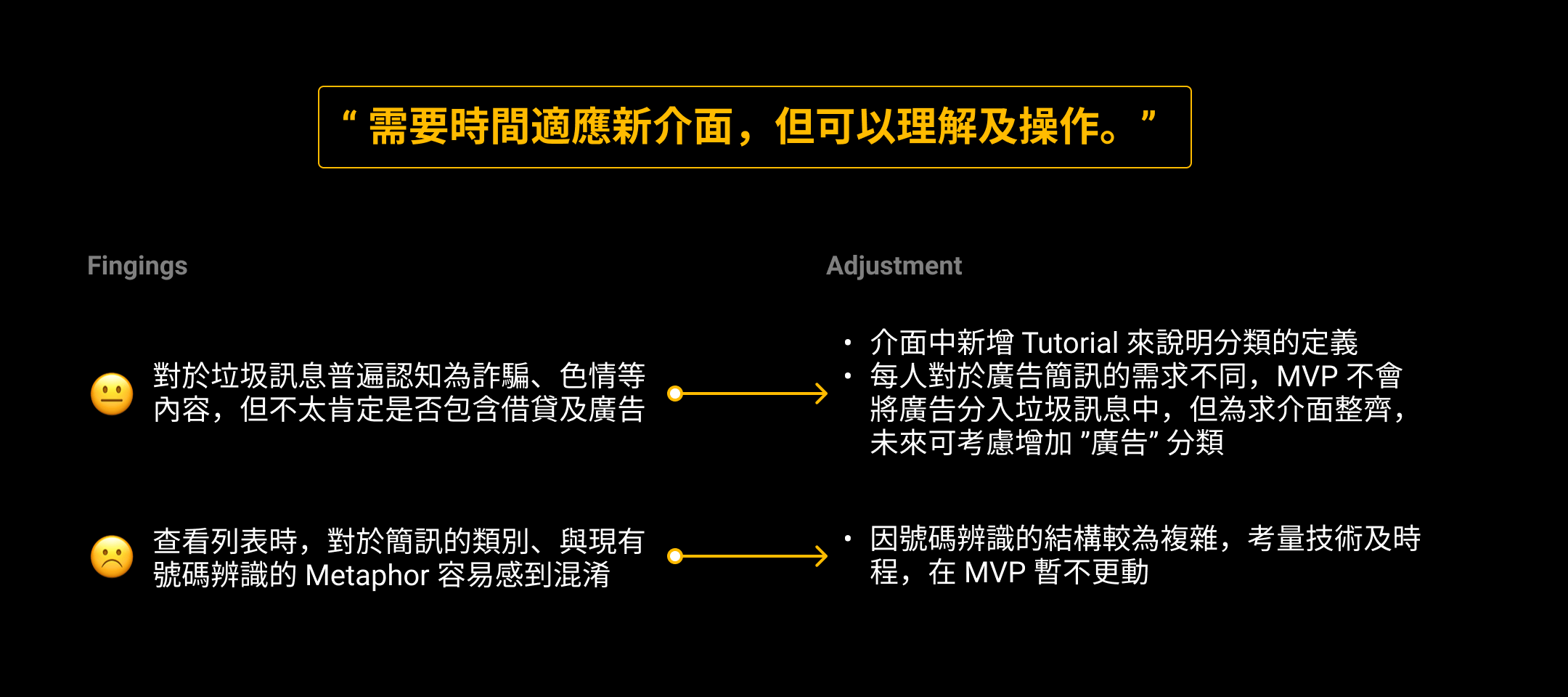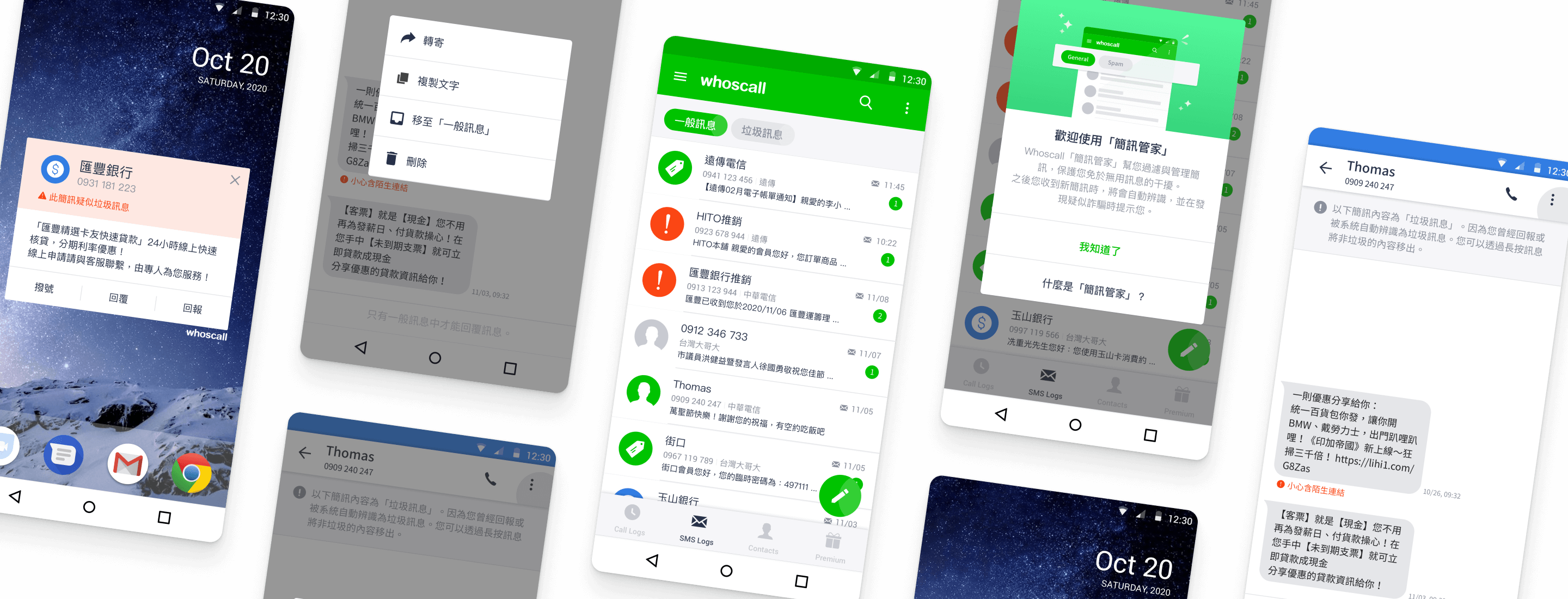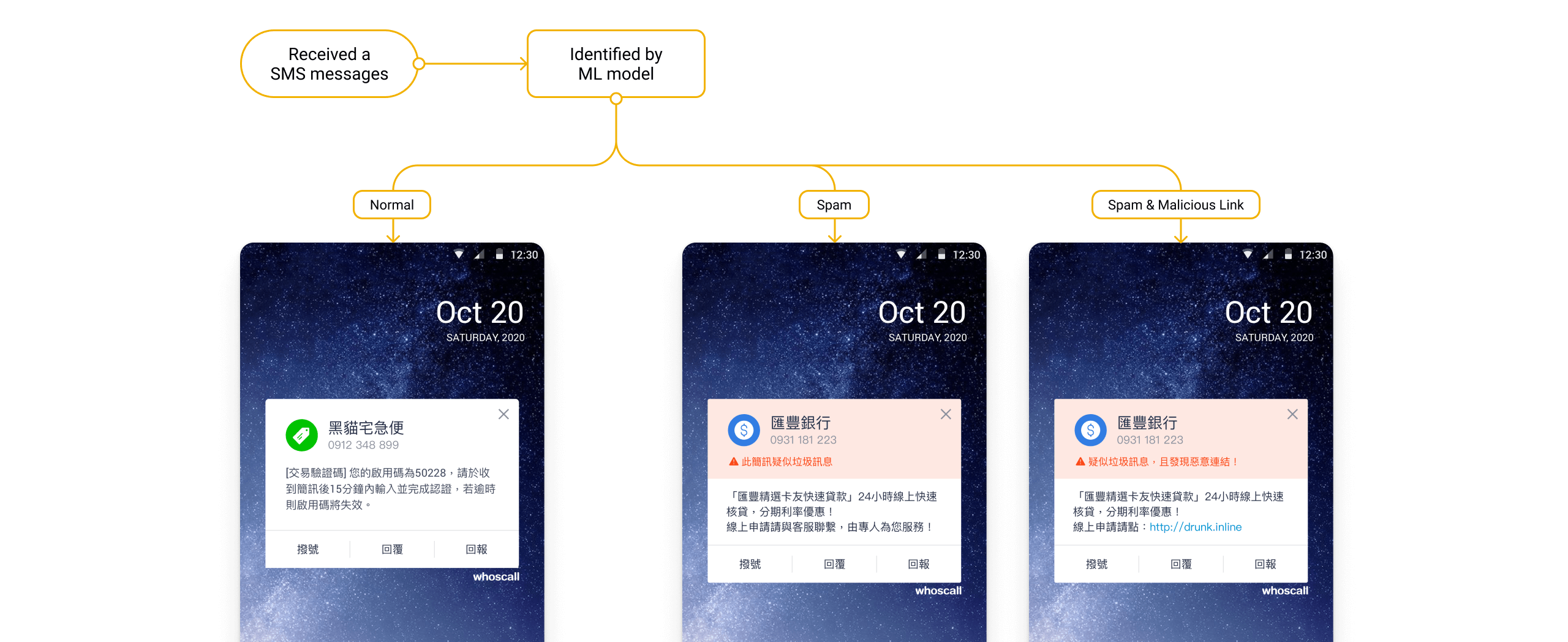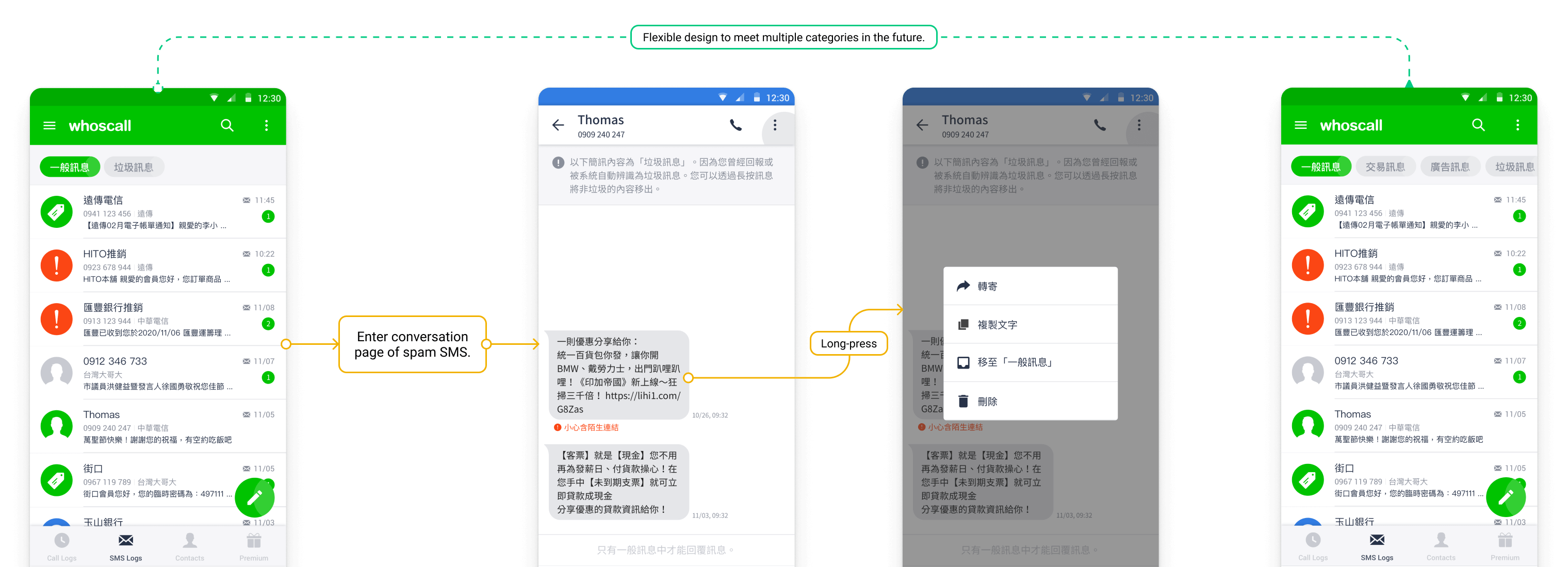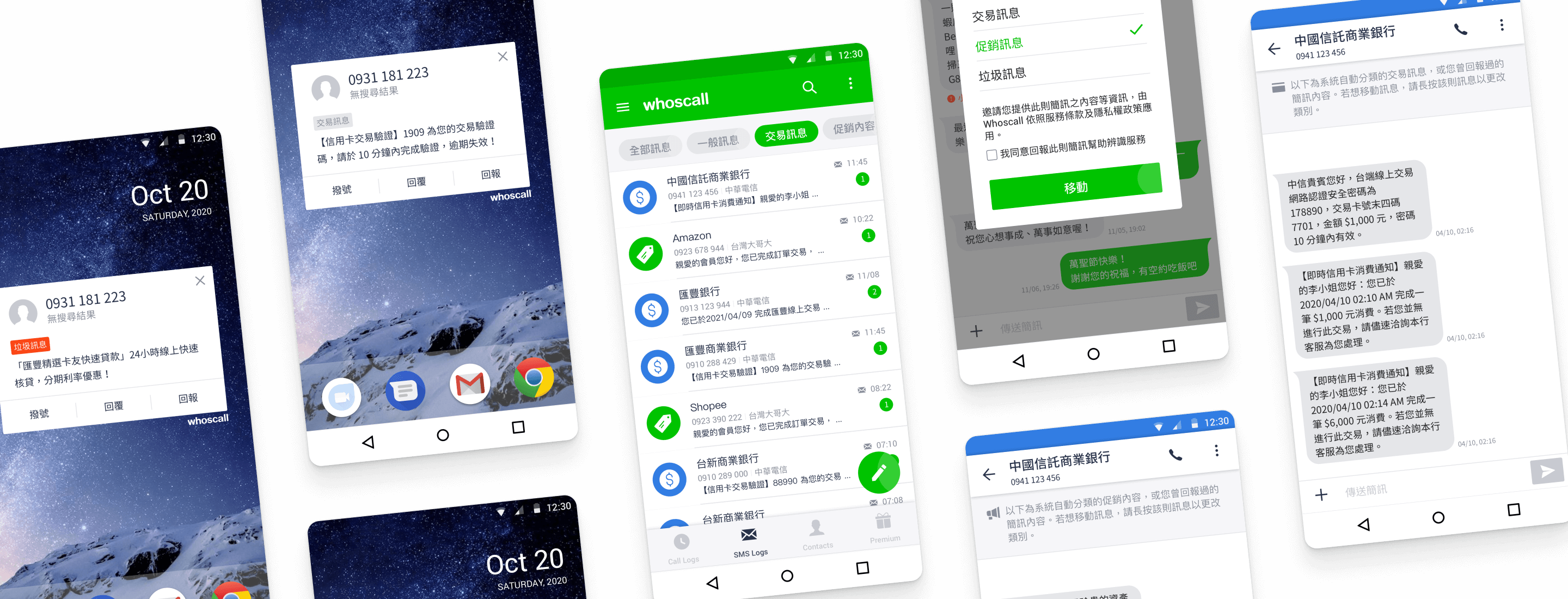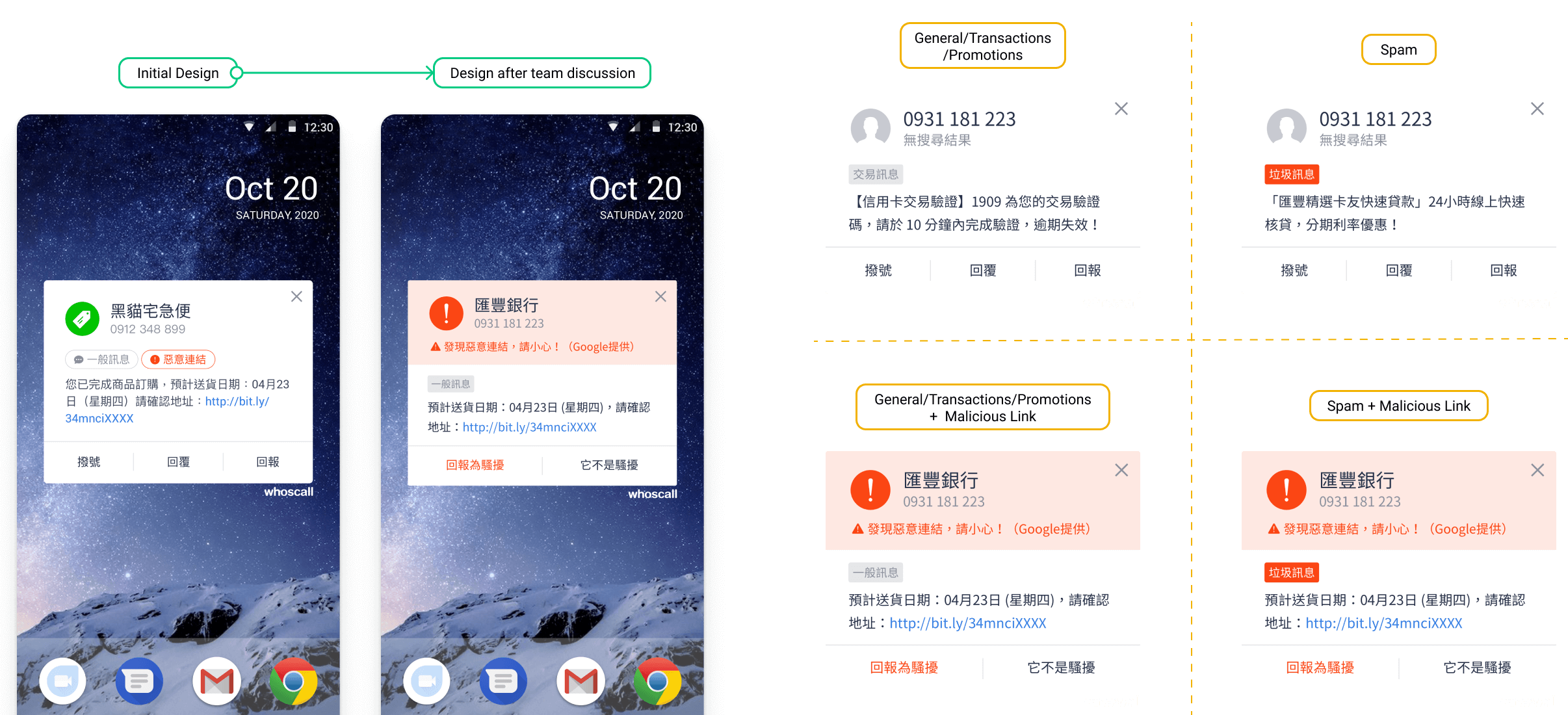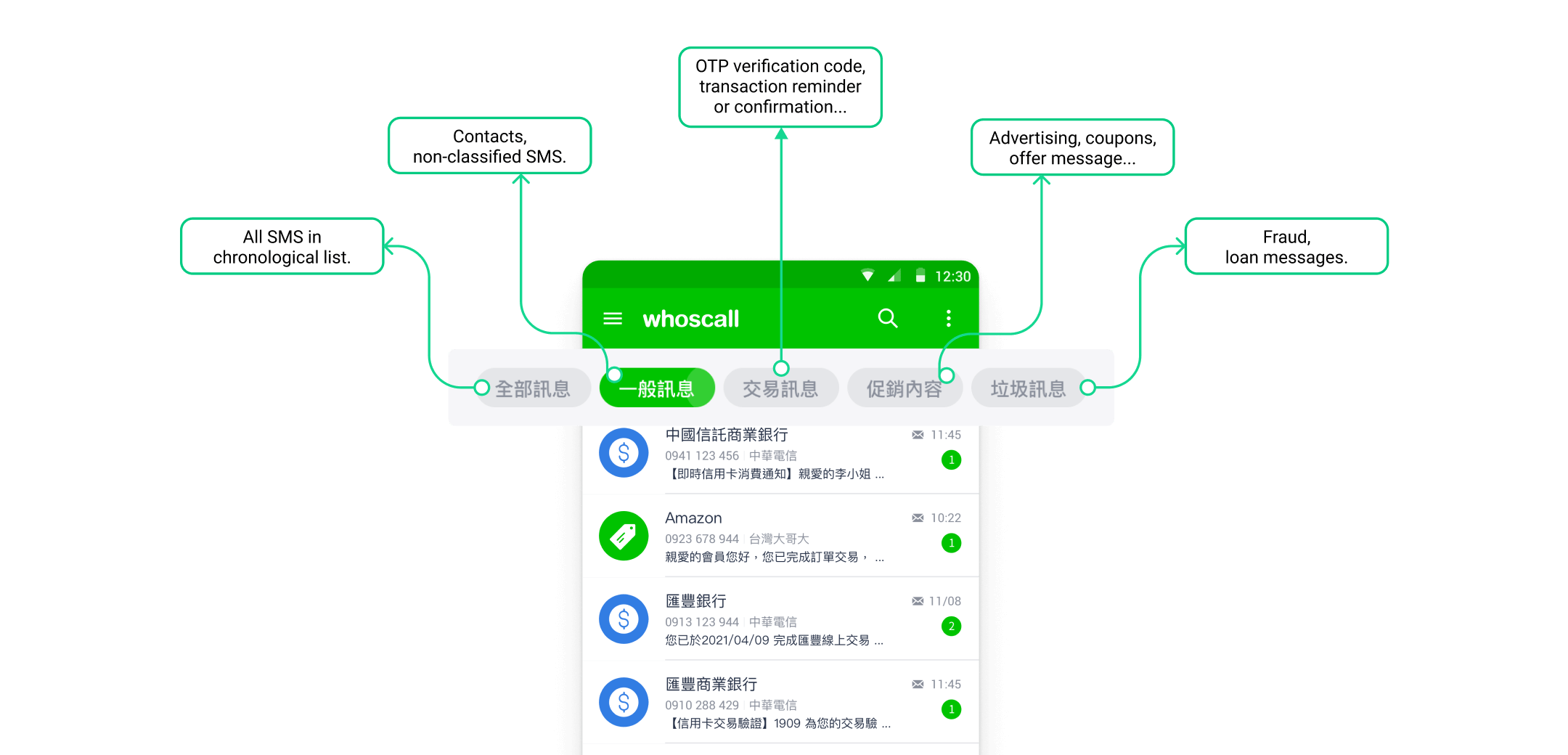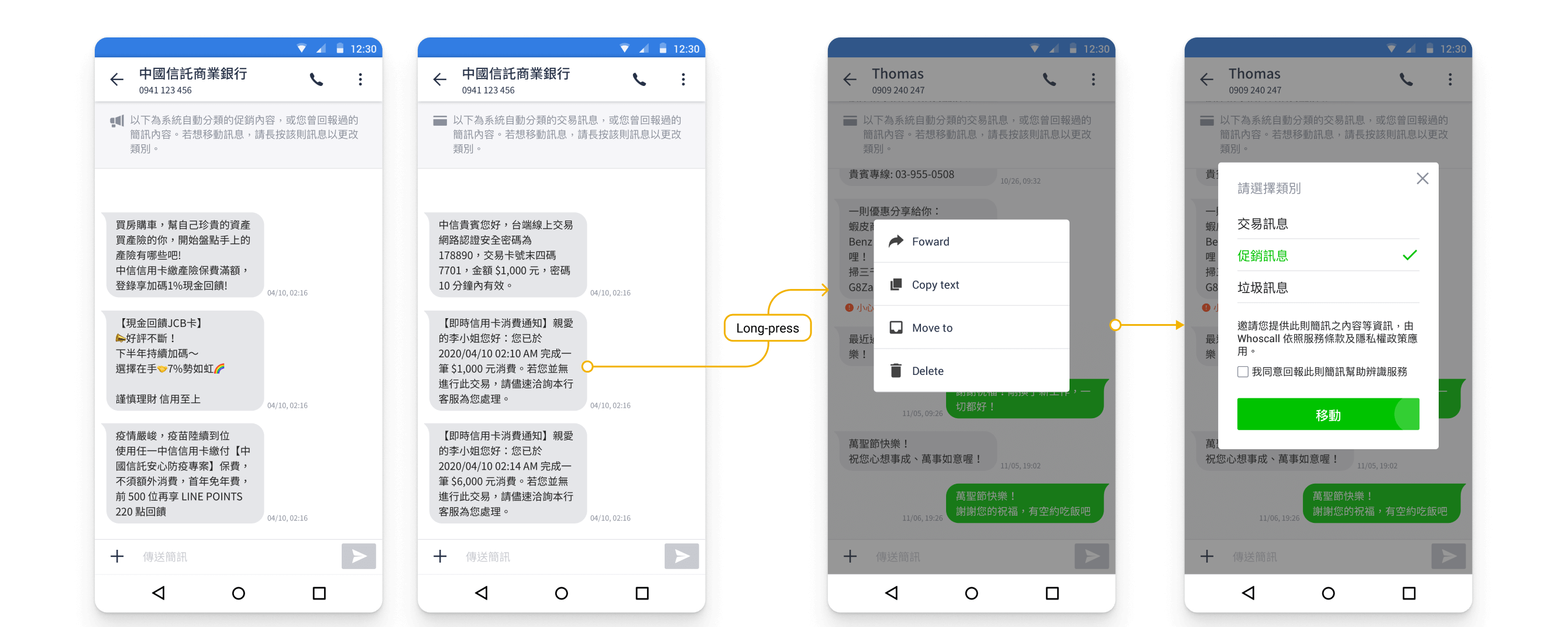Timeline
2020 Nov - 2021 MayBackground
Our company expected to release a "category" feature for Whoscall app to make the SMS message list cleaner than its previous, chronological list.
At the same time, our technical team trained a ML model for text recognition, hoping to apply this technology to Whoscall app. We decided to apply this technique to this feature.

We started the experiment with the MVP product and delivered to the business team within six months. We decided to experiment in 2 stages - First identify only spam, and then move to multiple categories in the second stage.
